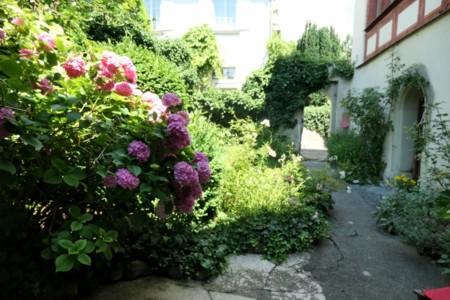During my visit to friends in Heiligenberg (Holy Mountain) near Lake Constance (see the previous blogpost) Sabine and I went to the town of Überlingen last Sunday morning to see the “Sweden procession“. It is a tradition which started at the end of the Thirty Years’ War: In 1634, the citizens could successfully repel a besiegement of the Swedes which attacked the town over two years. In gratitude for this success, the citizens made a vow to hold twice a year a “Sweden procession”, where after a church service the “Sweden Madonna”, a figure of Mary gilded in silver in 1659, is carried on shoulders by scouts through the town, together with a youth choir, altar boys and girls, and men and women dressed in the traditional costumes.
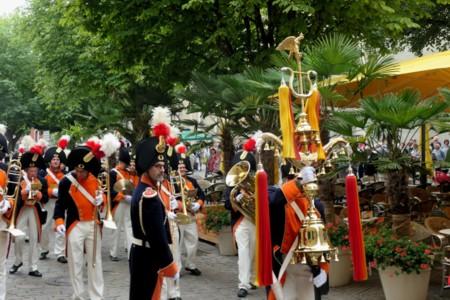 The town band in traditional costume of soldiers
The town band in traditional costume of soldiers
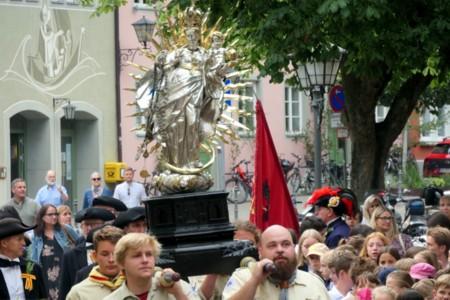 Scouts with the “Sweden Madonna”
Scouts with the “Sweden Madonna”
 Priest with the monstrance, baldaquin bearers and altar boys and girls
Priest with the monstrance, baldaquin bearers and altar boys and girls
Memories came up: In my youth, feeling like aeons ago, I had participated in similar processions as an altar boy. I was now a tourist, an on-looker, touched by the ambiance of the spiritual orientation. The faces of the youngsters in the Sweden procession, dressed in white, were focused and full of devotion. I was astonished to see in the cortège people of all ages – also a lot of youngsters and middle-aged people. Sabine was greeting some she knew from her choir.
While we were walking along Lake Constance, she told me that in past times, there had been such processions at many places but modern life turned people away, so that nowadays there are only very few of such processions left.
The citizens of Überlingen, however, are very proud of their tradition and there is a strong social cohesion in the town. She knows of people who lived for longer time in other parts of Germany but felt lost there, and they came back to live and work in this area. You can feel this sense of togetherness in the town – and it could be seen in the “Sword Dance”, related to the Sweden procession, which was performed in the courtyard of Überlingen and in front of the archives an hour later.
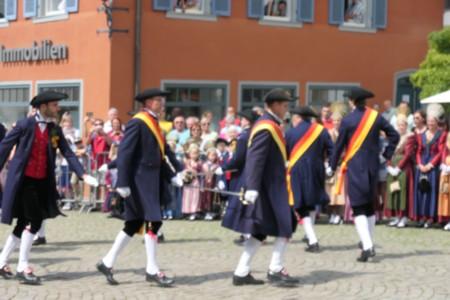
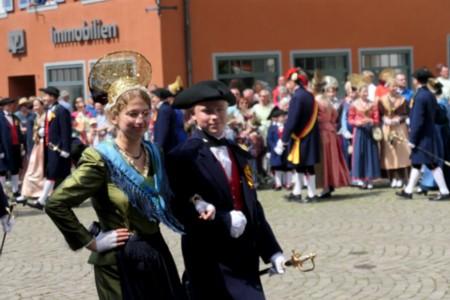
It was short before noon – and for us time to prepare for the Health & Healing – Prayer we do on Thursday and Sunday noon time. We rushed through some streets of the old town to the “Garden of Silence” at the “SusoHaus“, which might have been the birth place of Henry Suso (Heinrich Seuse), a medieval Dominican friar and mystic (1295-1366). In 2007, an association “New Mysticism in Dialogue” was founded to fill the house with life by transferring Heinrich Seuse’s spiritual impulses into our time and make them fruitful for people today. The house was renovated and now, visitors have the opportunity to become creatively active in writing, making music, philosophising, meditating and, above all, in dialog with others in the sense of their own lives. (translated from their website)
The “Garden of Silence” at the SusoHaus is freely accessible at all times, and sitting there, under flowers, was an excellent place for our Health & Healing meditation.
